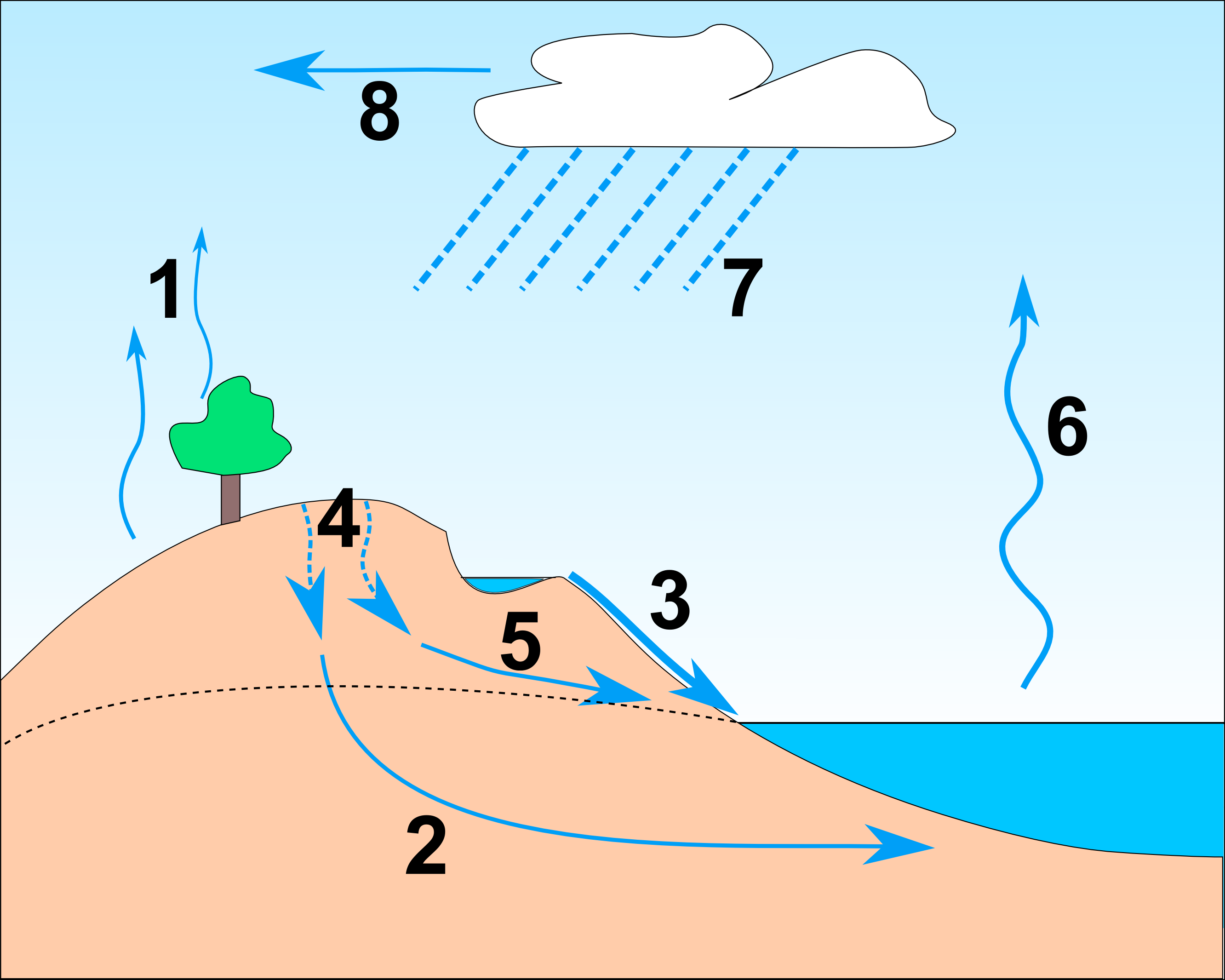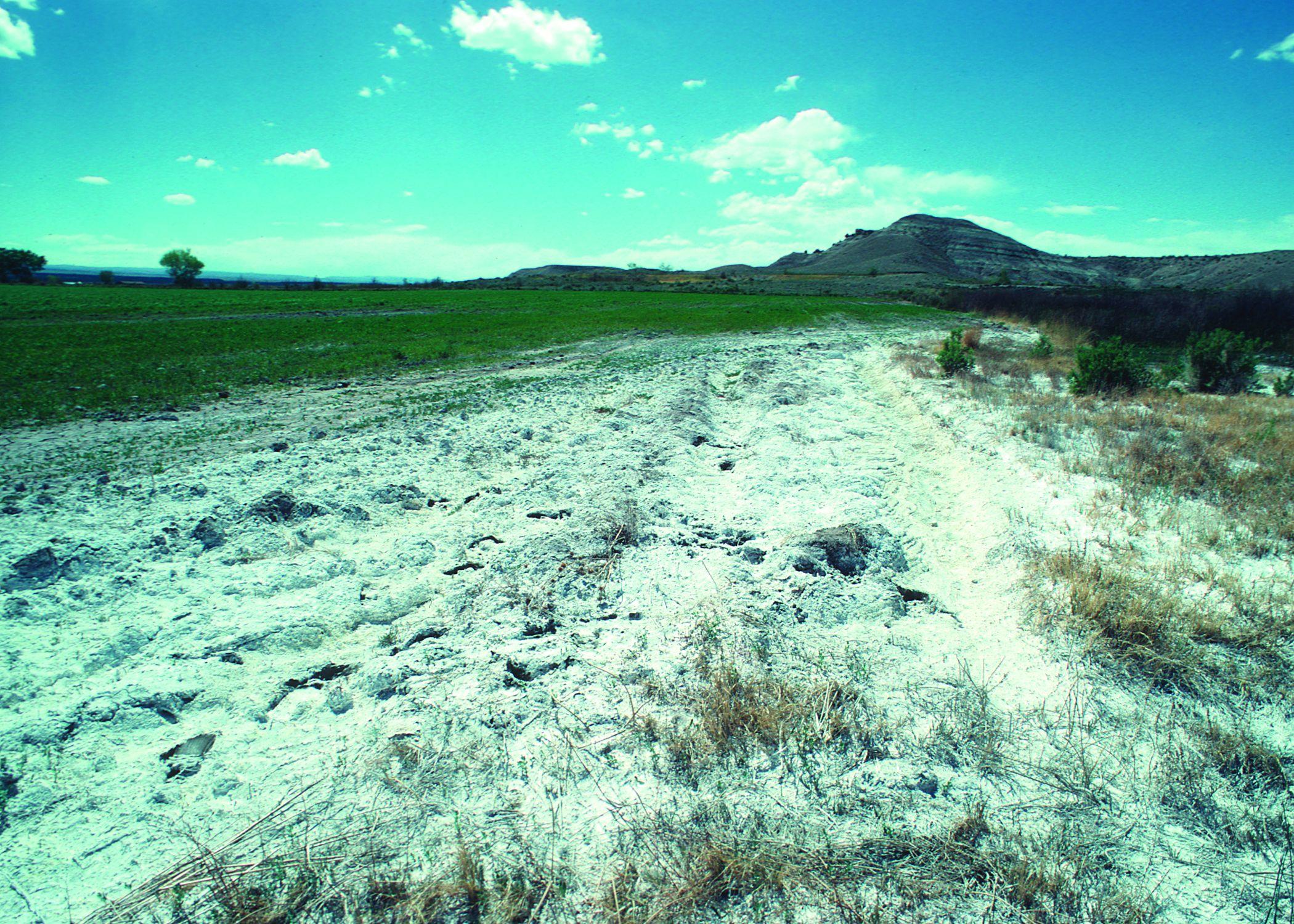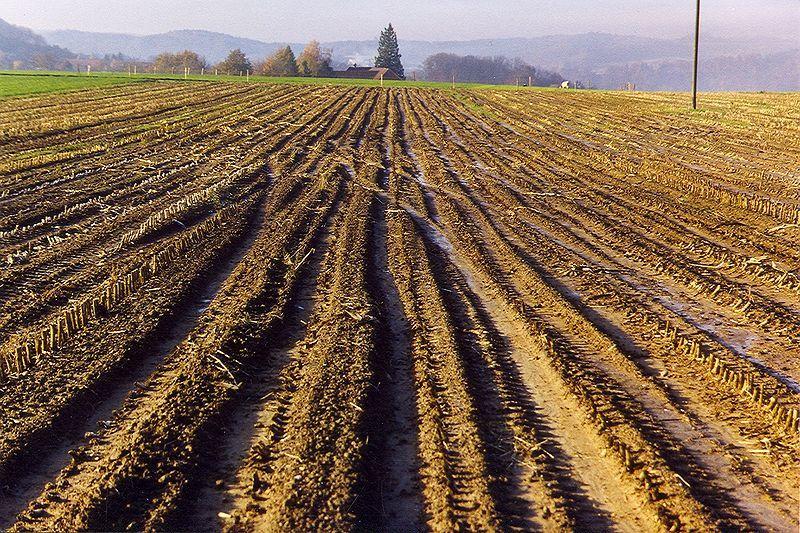Solutions: Water and the physical environment
1. Assign the numbers in the graphic to the following terms: Precipitation, infiltration, evaporation, evapotranspiration, interflow, vapour transport, surface runoff and groundwater flow.

- 1: Evapotranspiration
- 2: Groundwater flow
- 3: Surface runoff
- 4: Infiltration
- 5: Interflow
- 6: Evaporation
- 7: Precipitation
- 8: Vapour transport
2. What is the percentage of freshwater on the world’s water reserves (with glaciers and snow cover)? Choose the right answer.
- About 2.5%
3. What are the two nutrients which mainly control the growth of aquatic plants, algae and bacteria in aquatic systems?
- Nitrogen and phosphorus
4. Give a short explanation of the nutrient cycle.
- Nutrients in the soil are taken up by plants, which are consumed by humans or animals, and excreted again by them - or they are released back into the environment when organisms die. Microorganisms in the soil break this matter down, and again make nutrients available in their mineral form, which makes it possible for plants to take them up again.
5. Name at least three central functions of soils within the water and nutrient cycle.
- Storing and providing water
- Storing and providing nutrients
- Filtering and buffering pollution
- Providing habitats for organisms
- Regulating run off
- Acting as a source and sink of carbon
6. The _____ of a _____ is the _____ amount of water that a particular soil can hold for _____. If there is no _____ for some time, the soil will _____ and may reach what is known as the _____ when plants will begin to wilt because of lack of _____. Fill in the words: rainfall, maximum, moisture, plants, soil, field capacity, dry out, permanent wilting point
- The field capacity of a soil is the maximum amount of water that a particular soil can hold for plants. If there is no rainfall for some time, the soil will dry out and may reach what is known as the permanent wilting point (PWP) when plants will begin to wilt because of lack of moisture.
7. Plants represent a large portion of terrestrial biomass and have a significant impact on the water cycle and the climate while water availability dictate the limits of their distribution. What is the main effect of vegetation on the water cycle and what other positive effects are associated with vegetation in the water cycle? Name at least three other positive effects.
- The main effect is caused by the evapotranspiration that comprises the amount of water transpired and evaporated from the ecosystem and equals the amount of water coming into
the ecosystem by precipitation, without the system would only be percolation and runoff. - Functioning as a physical trap for precipitation
- Transferring water within the root system
- Changing energy balances
- Affecting soil formation and soil properties
- Stabilising soil
8. What is illustrated in the graphic below? What are the probably resulting effects that can be expected regarding the water cycle? Name at least four. (Image: Cubasch et al. 2013)
- The graphic illustrates different extrapolated climate change scenarios
- Rising sea levels
- Increasing evaporation
- Unpredictable precipitation patterns
- Changes in average annual run-off
- Groundwater changes
- Prolonging droughts
- Decreasing glacier volumes
- Increasing frequency and intensity of extreme events
9. Reducing water pollution, increasing efficiency in agriculture and saving water in domestic use are measures to increase water availability in a situation of water stress. Name at least four possibilities to achieve these goals!
- Water pricing
- Seasonal water rationing during times of shortage
- Adapt industrial and agricultural production to reduce water wastage
- Increase capture and storage of surface run-off
- Reuse or recycle wastewater after treatment
- Desalination of salty or brackish water
- Better use of groundwater resources
- Rainwater harvesting
10. Humans control runoff on a global scale and thus significantly modify the hydrological cycle. (True or false?)
- True
11. One result of urbanisation is that streams carry less water or dry up when it is not raining and flood when it does. (True or false?)
- True
12. What are human based reasons for eutrophication? Name at least two.
- High nutrient loads from agricultural runoffs
- Discharge of domestic and industrial wastewater
- Atmospheric inputs from fossil fuel burning
13. Lack of sanitation is one of the most significant forms of water pollution. In developing countries 90% of the sewage is discharged untreated directly into water bodies. At the beginning of 2016 the world’s population is estimated to be 7.4 billion. What is the percentage of the world’s population that is living without any form of sanitation? Choose the right answer.
- 32.5%
14. Less than 50% of world’s large river systems are affected by dams fortunately not the eight most biogeographically diverse. (True or false?)
- False
15. How many dams with heights above 15 m exist worldwide? Choose the right answer.
- More than 45,000
16. On a global basis, agriculture accounts for more than 70% of all water withdrawals. (True or false?)
- True
17. Between 30 % and 60 % of the water abstracted for agriculture is returned to rivers. What is the issue/problem with the returned water?
- The water is polluted with salts, fertilisers, nutrients, pesticides and agro-chemicals.
18. Which two types of soil degradation are shown in the following two pictures? Give a short description of these processes. (Images: Nichols, R. USDA NRCS 2011 & Prasuhn, V. 2009)
a)

b)

a) Salinisation
- Salinisation is the accumulation of large amounts of soluble salts in the soil, usually chlorides, carbonates and sulphates of sodium, magnesium and calcium.
b) Compaction
- Compaction is a process in which soil layers lose some or most of their characteristic pore space and beneficial structure, and as a result become more impermeable.
19. Name at least four human causes of erosion as well as four measures to control erosion.
Human causes of erosion
- Poor agricultural practices
- Exposing soil on slopes
- Deforestation
- Overgrazing
- Altering the characteristics of streams
- Causing increased peak water discharges
- Sealing of surfaces
Measures to control erosion
- Keeping soils covered
- Improving crop production techniques
- Improving ploughing techniques
- Filling small gullies
- Terracing
- Carefully selecting of land use
- Conservation tillage methods
- Armouring of channels with materials to prevent erosion
- Using wind breaks to modify wind action
20. Deforestation of tropical rainforest is increasing every year. (True or false?)
- False
21. Arrange the following reasons in the right order starting with the greatest cause of deforestation: commercial farming, fuel-wood, legal as well as illegal wood extraction and subsistence farming.
- Subsistence farming
- commercial farming
- legal as well as illegal wood extraction
- fuel-wood extraction
22. What are the superordinate impacts of deforestation? Name at least four.
- Impact on atmosphere
- Impact on water cycle
- Impact on soils
- Impact on biodiversity
- Economic impact
23. Groundwater is usually the main freshwater resource in urban areas. What are the three major ways how urbanisation is influencing groundwater?
- Decreasing recharge
- Lowering groundwater tables
- Polluting groundwater